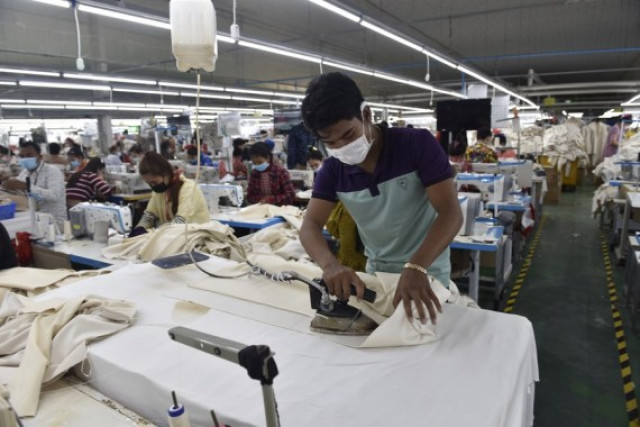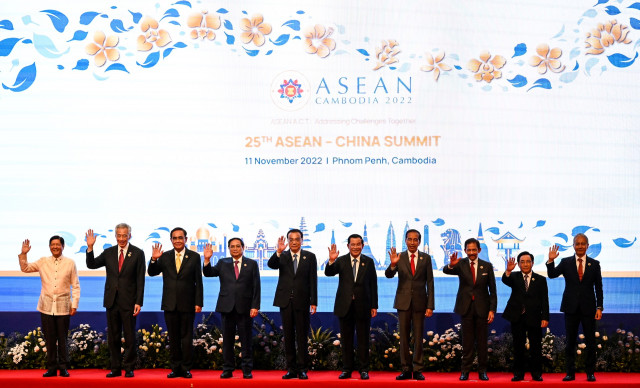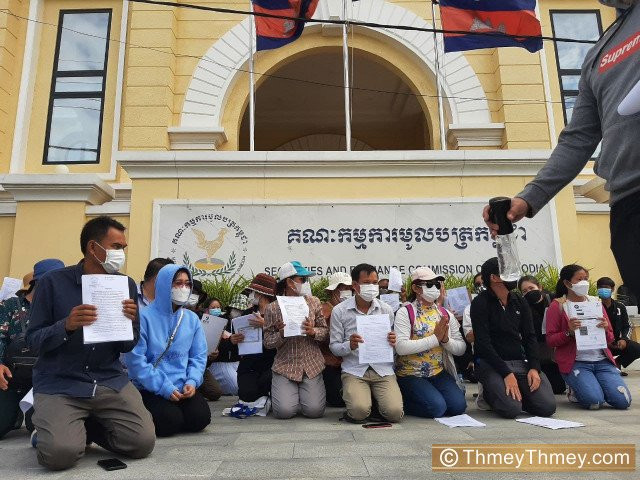Cambodian Economy Keeps Recovering From COVID-19

- By François Camps
- April 10, 2022 11:33 AM
But structural reforms have to be undergone to improve Cambodia’s external competitiveness
PHNOM PENH – Cambodia’s economy is pursuing its recovery from the economic slowdown caused by the COVID-19 pandemic, confirm to two reports released this week by the World Bank and the Asian Bank of Development, on April 4 and April 6, respectively.
According to the World Bank, the Cambodian economy should grow by 4.5 percent in 2022. The ADB is more optimistic, with a projected growth of 5.3 percent. After enduring an economic recession in 2020 (-3 percent) and observing the start of an economic recovery in 2021, with a 3.1 percent estimated GDP increase, the economic growth is on the way to regain its pre-pandemic levels, which stood at around 7 percent GDP growth per year. The ADB forecasts a 6.5 percent growth in 2023.
One of the main reasons to explain such a recovery has to be found in the quick and efficient response to the COVID-19 outbreak that started in February 2021. “About 83 percent of the population have received two doses of coronavirus vaccine,” writes the World Bank report. “Cambodia has shifted to a strategy for ‘living with COVID-19’ enabling a broad-based economic recovery to take shape.”
In detail, the traditional growth drivers, especially the garment, travel goods, footwear and bicycle manufacturing industries, as well as agriculture, have fully recovered from the pandemic, says the two-page-long document.
On top of the vaccination campaign, which was key to quickly restarting the domestic consumption in most sectors, the World Bank report underlines the importance of the cash transfer program, launched by the Cambodian government in June 2020, to support the most vulnerable people.
“As of February 2022, [the cash transfer program] covered 690,000 households (2.7 million individuals) or approximately 19 percent of households,” the report writes. “The program has disbursed $593 million since the launch in June 2020, thus far mitigating some of the negative impacts for the poor and vulnerable households.”
However, the Cambodian economy is far from being out of the woods. Accounting for a fifth of the country’s GDP, and about two million jobs in both formal and informal sectors, the tourism industry is still heavily impacted by more than two years of travel restrictions and border closures around the world.
Despite the progressive reopening of the Cambodian borders at the end of 2021, and the cancellation of all travel restrictions for vaccinated travelers in March 2022, international tourists seem not to be rushing to visit the country.
According to a Ministry of Tourism report released on April 3, 151,680 international tourists visited the country in the first three months of 2022. While it represents twice as many visitors as the same period last year, it is still 91.13 percent down from the first quarter of 2018, before the pandemic started.
“It will take time for tourism to come back to the pre-pandemic level as it is still difficult and costly to travel,” explains Anthon Gill, Asian Development Bank’s Acting Country Director for Cambodia. “The surge in energy prices and the threat of a more deadly COVID-19 variant represent downside risks to the tourism sector’s recovery. In addition, the zero-COVID policy of the People’s Republic of China, a major source of incoming tourists, will be a challenge to the sector,” he adds. Yet, “Cambodia can take advantage of this time to develop a new tourism strategy that focuses on higher-value, sustainable tourism,” says Gill.
Thousands of kilometers away from Phnom Penh, the ongoing war between Ukraine and Russia is also having noticeable consequences on the Cambodian economy. Fuel prices have surged in the past two months, directly impacting the transport of goods and people.
“In 2018, in response to the higher oil prices, the government cut petrol taxes [on gasoline, diesel and kerosene],” notes Anthon Gill. But, “this time around, there is little room for further tax cuts […] as the government is already experiencing a budget deficit at an estimated 4% of GDP in 2021. We expect the government to monitor the oil prices closely in the next few months to strike a balance between price stability and economic growth,” he adds.
In order to keep the recovery going and diversify the economic pillars, the ADB underlines the necessity for Cambodia to transform its manufacturing sector. “Cambodia’s growth model, based on attracting foreign direct investments with low-cost labor, has delivered high growth rates but is now showing limitations. As living standards increase, the low-cost model is also running out of steam,” says the ADB Country Director for Cambodia.
In the 2019 Global Competitiveness Index, Cambodia ranked 106th out of 141 countries, coming 127th for business dynamism, 131st for public sector performance, and 132nd for the provision of digital public services. “The government needs to create an enabling environment for businesses to operate, expand and compete with a high level of certainty and transparency,” says Anthon Gill. “Micro, small and medium enterprises (MSMEs), especially women-owned MSMEs need to be supported, including having better access to financial services, training, entrepreneurship support, and network. Cambodia should also take advantage of innovation and technology to drive its competitiveness.”
Before seeing these transformations completed, the country will count on its growing integration into the global economy to ensure its development. “The new Law on Investment, the Cambodia-China and Cambodia-Republic of Korea free trade agreements and the Regional Comprehensive Economic Partnership are expected to help boost investment and trade in the coming years,” the World Bank report concludes.















